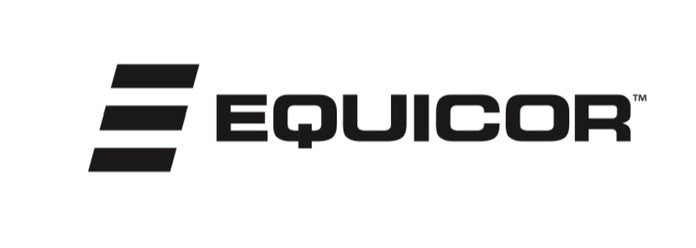
Muscle Overheating and Back Soreness in Horses
Understanding the Impact of Thermal Stress on Equine Muscle Health
Introduction
Muscle soreness in horses is a common concern among trainers, veterinarians, and equestrian enthusiasts. While various factors can contribute to muscle discomfort, one critical yet sometimes overlooked cause is the overheating of muscles during exercise and training, such as trapping heat on the back from using synthetic saddle pads. This bulletin examines how muscle overheating contributes to soreness, the underlying physiological mechanisms involved, signs to watch for, and strategies to prevent thermal-induced muscle problems in horses.
The Physiology of Muscle Overheating
During exercise, a horse’s muscles work harder, producing energy that results in the generation of heat. Usually, horses regulate their body temperature efficiently through sweating, increased blood flow, and respiratory adjustments. However, intense activity, inadequate rest, or external heat sources can overwhelm these cooling mechanisms, leading to muscle overheating. Regarding the use of saddle pads, synthetic and blended pads can trap heat on the back, leading to increased muscle temperature and potentially sore back muscles.
When muscle tissue temperature rises above the normal physiological range, several processes begin to threaten muscle health:
· Protein Denaturation: Excessive heat can alter the structure of muscle proteins, reducing their functionality and making muscles more prone to injury.
· Enzyme Dysfunction: Enzymes critical for muscle energy production lose efficiency at high temperatures, impairing metabolic processes and leading to fatigue.
· Increased Oxidative Stress: Heated muscles produce more free radicals, which damage cells and increase the risk of inflammation and soreness.
· Vasodilation and Fluid Loss: To dissipate heat, blood vessels dilate and fluid is lost through sweating. Dehydration may reduce blood flow to muscles, causing a buildup of metabolic waste.
· Cell Membrane Instability: Extreme temperatures can compromise cell membrane integrity, leading to leakage of cellular contents and triggering soreness.
How Overheating Causes Muscle Soreness
Muscle soreness, often described as stiffness, pain, or reluctance to move, is a direct consequence of the physiological disturbances caused by overheating. Here’s how the process unfolds:
· Accumulation of Metabolic Byproducts: Overheated muscles struggle to clear lactate, hydrogen ions, and other waste products, which accumulate and irritate muscle fibers.
· Inflammatory Response: Damage to muscle cells prompts the body to release inflammatory mediators. This increases blood flow to the affected area but also amplifies pain and swelling.
· Microtears and Muscle Damage: Heat-induced changes can make muscle fibers more susceptible to microtears, especially during vigorous exercise or repetitive strain. These micro-injuries are a hallmark of delayed onset muscle soreness (DOMS).
· Reduced Recovery Capacity: Overheated muscles have diminished repair mechanisms, prolonging soreness and increasing the risk of chronic muscle problems.
Signs of Muscle Soreness Due to Overheating
Horse owners and caretakers should be vigilant for signs that a horse may be experiencing muscle soreness related to overheating. Common indicators include:
· Stiffness, especially in the morning or after exercise
· Reluctance to move or perform tasks previously done with ease
· Muscle tremors or twitching
· Swelling or heat over affected muscle groups
· Pain on palpation of muscles
· Shortened stride or uneven gait
· Excessive sweating or, conversely, decreased sweating (anhidrosis)
· General lethargy or signs of discomfort
Risk Factors for Muscle Overheating in Horses
Several conditions increase the likelihood of muscle overheating and subsequent soreness:
· Intense or prolonged exercise, especially in hot weather with synthetic or blended saddle pads
· Inadequate preparation or conditioning for activity
· Poor hydration before, during, and after exercise
· Insufficient rest or recovery intervals
· Heavy muscle mass or overweight condition
· Wearing heavy tack or blankets in warm environments, especially the use of synthetic products and saddle pads
· Limited airflow or stall confinement during hot periods
Preventing Muscle Soreness from Overheating
Taking proactive steps can help safeguard muscle health in horses and minimize the risk of overheating:
· Gradual Conditioning: Introduce exercise routines slowly, allowing muscles to adapt to increased workloads and heat generation.
· Saddle Pad Material & Construction: Using natural fibers, such as a premium all-natural wool is best for temperature regulation, moisture wicking, and heat transfer off the back.
· Hydration Management: Ensure horses have continuous access to clean, cool water—before, during, and after activity.
· Appropriate Scheduling: Exercise horses during cooler times of day and avoid strenuous work during extreme heat.
· Cooling Techniques: Use fans, shade, and cool baths to assist with post-exercise cooling. Rapid cooling can reduce inflammation and support recovery.
· Monitor for Early Warning Signs: Regularly check muscle tone, gait, and attitude for subtle changes indicating discomfort or overheating.
· Electrolyte Supplementation: In hot weather or during intense training, supplement electrolytes to support muscle and nerve function.
· Rest and Recovery: Build rest days and gentle exercise into schedules to facilitate muscle repair.
Intervention and Treatment
If muscle soreness occurs, prompt intervention is essential:
· Allow the horse to rest and avoid further strenuous activity until signs resolve
· Apply cold therapy or gentle massage to affected muscle groups
· Provide electrolyte-rich fluids and ensure adequate hydration
· Consult a veterinarian for persistent or severe muscle soreness; underlying conditions may need specialized treatment
Conclusion
The overheating of muscles stands as a significant contributor to muscle soreness in horses. Understanding the interplay between thermal stress and muscle health can empower caretakers to prevent, detect, and address muscle soreness before it escalates. By prioritizing proper conditioning, hydration, and attentive care, including saddle pad material and construction, horse owners can nurture equine athletes that are resilient, comfortable, and ready to perform at their best.
